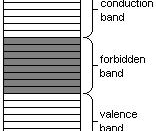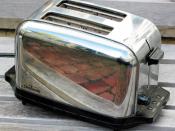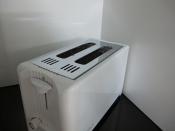Appliances that heat up, such as a hair dryer, a clothes iron, toaster, electric toaster oven, or an electric space heater all work on the same idea. They change electrical energy to heat energy.
The devices all plug into a source of electricity. Electric current runs from your wall socket down the wire and into the appliance.
Inside each of the appliances are loops of special mixture of metals. One type is called nichrome . Nichrome wire is an alloy of nickel and chromium. It has two features that make it a good producer of heat:
Nichrome wire has a fairly high electrical resistance compared to something like copper wire, so even a short length of it has enough resistance to get quite hot.
The nichrome alloy does not oxidize when heated. Iron wire would rust very quickly at the temperatures seen in a toaster.
Electricity cannot pass through this special metal very easily.
The metal slows down the electrons and "holds up" the current flowing through it. This is called the "resistance" of the metal. When the resistance of a metal is higher, the metal will get hot because of the friction of the electrons in the current of electricity
As the electricity is forced through the wires, the wires begin to heat up and glow very hot. If you look inside your toaster, you'll see those coils or wire glowing orange. It's those coils or loops of wire that cause the bread to brown making your toast.
In older toasters, the hot wires heat up a small device called a thermocouple. When it reaches the right temperature, which is about the same time as your toast is properly toasted, it releases a catch allowing the toast to pop up. At the same time, it shuts off the electricity.



Good
It got good points on electric filimants
0 out of 0 people found this comment useful.